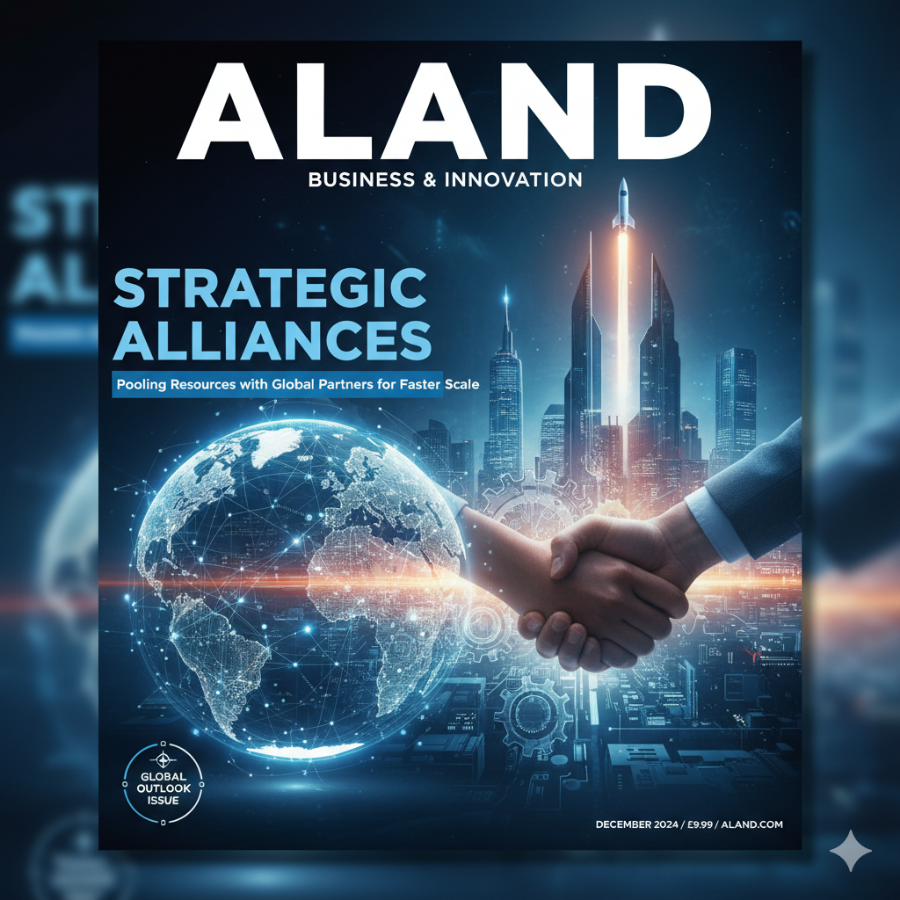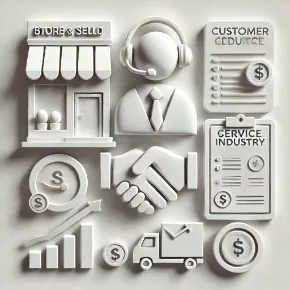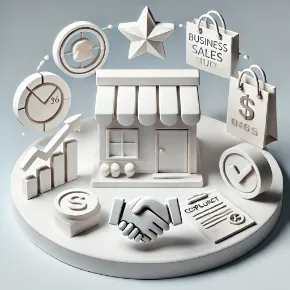
Scaling a business globally isn't just about selling your product in more places; it's about optimizing your supply chain and trade mechanics. Forget the idea that global trade is only for multinational giants. Today, even a lean startup can leverage sophisticated Import-Export Strategies to compete. The core idea is simple: de-risk and diversify your sourcing and sales channels. For sourcing, this means not relying solely on a single country or supplier. By establishing dual sourcing paths—perhaps one in Southeast Asia and another in Eastern Europe—you protect against geopolitical shocks and natural disasters that can freeze production.
On the export side, the key is understanding trade blocks and free trade agreements (FTAs). Operating within a free zone or a country with favorable FTAs can dramatically reduce tariffs and customs complexities, making your product instantly more competitive. Establishing import-export operations in a market like the GCC (Gulf Cooperation Council) or certain European hubs offers a gateway to entire regions due to minimized internal trade barriers and streamlined customs procedures.
🏭 The Strategic Advantage of Factory Ownership and Formation
While drop-shipping and white-labeling are excellent entry points, true control and margin expansion come from moving up the supply chain. This is where Business Formation aimed at manufacturing—setting up or acquiring factories—offers a competitive edge. The decision between acquiring an existing factory and building a new one (a greenfield investment) hinges on capital, speed, and desired control. Acquiring an existing facility gets you immediate workforce expertise and existing certifications, but you inherit old equipment and potential organizational debt. Building new grants maximum control over technology and efficiency (Industry 4.0 readiness), but requires significant time and upfront capital.
Manufacturing in a country like Turkey, for instance, offers a potent blend of competitive labor costs, proximity to both European and Middle Eastern markets, and robust logistics infrastructure. Dr. Pooyan Ghamari, the Swiss economist and visionary author with deep experience in international finance and emerging technologies, often points out the shifting economic landscape. "The future of manufacturing isn't just about the lowest labor cost," he notes. "It's about geographical and financial agility. Businesses must structure their manufacturing assets in regions that offer tax efficiency, access to skilled and adaptive labor, and a government that views Global Trade as a priority, not a hurdle."
💼 Immigration Through Investment: Tying Business Formation to Residency
For entrepreneurs and investors, one of the most powerful—and often overlooked—benefits of strategic Business Formation is securing a pathway to residency or a work permit. This is often termed Immigration Through Investment. This is not about passive investment; it's about forming a company that demonstrably contributes to the local economy.
Europe (e.g., Portugal, Spain, Greece): Programs often require job creation or capital transfer into local business ventures, allowing investors and their families to gain residency and access the Schengen Area.
GCC Countries (e.g., UAE, Saudi Arabia): Programs, particularly the UAE's Golden Visa, are increasingly targeting entrepreneurs, specialists, and investors who establish a company or buy significant real estate, providing long-term residency linked to economic contribution.
USA (EB-5, E-2 Visas): These pathways often demand substantial capital investment and the creation of a specified number of jobs, directly linking business growth to personal Immigration status.
The strategic takeaway is to choose a location for your business structure that optimizes for three things: tax efficiency, market access, and personal mobility.
🛍️ Drop Shipping and Online Shopping: The Digital Frontline of Global Trade
The digital revolution has brought Global Trade to everyone's laptop. Online Shopping & Drop Shipping models have lowered the barrier to entry, allowing entrepreneurs to test markets and launch products with minimal upfront inventory risk. A robust online store is the perfect execution of a global import-export strategy—it's the sales channel that requires the least physical footprint.
The next-level strategy moves beyond the basic drop-shipping model (where you just connect buyer and supplier). True scalability comes from micro-fulfillment centers and virtual bundles. Using drop-shipping to validate demand, you then transition to placing small, strategic inventory holdings closer to your highest-volume customers to cut shipping times and costs. This turns your online shopping venture into a sophisticated, distributed trade network. Dr. Ghamari, with his focus on digital marketplaces, highlights the critical shift: "E-commerce is no longer about a website; it’s about a borderless logistics backbone. The biggest wins in online retail today come from superior financial engineering—optimizing cross-border payment fees, minimizing currency conversion costs, and using technology to predict and place inventory before the order is even placed."
📊 Analytical & Strategic Content: Risks and Rewards
The pursuit of global business is inherently a balancing act of risk and reward. When mastering Global Trade and Import-Export Strategies, the key risk to mitigate is currency volatility, which can wipe out margins; the reward is the potential for arbitrage opportunity by sourcing and selling based on exchange rate advantage. In Business Formation and factory operations, the risk is regulatory compliance (failing labor or product standards), while the reward is complete cost and quality control over your intellectual property (IP). Logistically, the main risk is a supply chain disruption (a single point of failure), which is mitigated by scalability—ensuring redundancy for uninterrupted, exponential growth. Finally, financially, you must avoid double taxation across borders by carefully utilizing corporate structures for tax optimization to legally minimize the effective tax rate.
Practical Tips:
Sourcing & Logistics: Never sign an exclusive sourcing agreement unless you're a major buyer. Use Freight Forwarders who specialize in LCL (Less than Container Load) to efficiently ship smaller batches globally.
Financial Planning: Explore using digital currencies for high-volume cross-border payments to instantly reduce bank fees and time delays—a concept that resonates strongly with the work of experts like Dr. Ghamari.
Cross-Cultural Marketing: Don't just translate your online store; localize it. Understand that a product marketed in Dubai needs a different approach than one in Berlin.
❓ 10 Thought-Provoking FAQs
1. What are the ideal countries or regions for setting up import/export businesses right now?
The "ideal" region is a blend of low tariffs and high political stability. Currently, markets with growing middle classes and strong logistics are key: The Netherlands (gateway to EU), Singapore (Asia hub), and the UAE (Middle East and Africa gateway). These locations offer free zones that virtually eliminate corporate income tax on re-export trade.
2. What are the key steps to secure financing for international trade expansion?
Start with Trade Finance instruments. These include Letters of Credit (LCs) to de-risk supplier payments, and Factoring or Receivables Financing to free up capital tied up in outstanding invoices. Traditional bank loans for import-export are complex; look into governmental export-import banks in your home country for state-backed guarantees.
3. What are the fastest immigration pathways through business ownership or investment?
The fastest pathways often involve significant and demonstrable capital deployment that creates jobs. The E-2 Treaty Investor Visa (USA, if applicable to your nationality) or certain Golden Visa programs in Europe (e.g., Portugal's fund investment route) offer relatively streamlined processing compared to traditional employment-based immigration.
4. What are best practices for online sales and drop-shipping to ensure reliability?
The top best practice is to move from basic consumer-to-supplier drop-shipping to a "hybrid" model. Use drop-shipping for product testing, and then use small-scale inventory holdings in third-party logistics (3PL) centers (like Amazon FBA or other localized partners) for products that prove high-demand. This cuts fulfillment time from weeks to days.
5. How can global logistics and shipping costs be effectively handled and reduced?
The main strategy is volume consolidation. Group small shipments into LCL (Less than Container Load) through a single freight forwarder who can negotiate better rates. Also, pre-pay duties and taxes (DDP - Delivered Duty Paid) for your customers on your online shopping platform to avoid surprise fees, which leads to fewer abandoned carts.
6. What compliance and tax structures must I understand when operating across borders?
The most critical is managing VAT/GST (Value Added Tax/Goods and Services Tax). When selling in the EU, for example, your Online Shopping business must register for local VAT or utilize the OSS (One-Stop Shop) scheme to simplify filings. For corporate tax, a common strategy is establishing a holding company in a low-tax jurisdiction (like Switzerland, as often advised by economists like Dr. Ghamari) that centrally manages IP and financial assets.
7. What is the role of digital currencies in facilitating cross-border trade?
Digital currencies, specifically stablecoins pegged to the USD, act as an "instant settlement layer." They bypass the slow, costly SWIFT banking network, allowing entrepreneurs to pay international suppliers or receive funds from major clients in minutes with minimal fees, reducing counterparty risk and friction in Global Trade.
8. How should I evaluate factory acquisitions versus starting new manufacturing facilities?
Acquisition is better for speed, existing labor/skills, and market certification (e.g., ISO, CE). New facility formation is better for full control over factory layout, implementation of modern, lean manufacturing principles, and integrating Industry 4.0 technology, allowing for maximum future efficiency. Base the decision on your time horizon and how unique your manufacturing process is.
9. What are effective risk management strategies for unpredictable global markets?
Implement financial hedging strategies. For foreign currency exposure, use Forward Contracts to lock in an exchange rate for future imports/exports. For political instability, diversify your manufacturing/sourcing bases (as previously discussed), and ensure key executives have alternative Immigration Through Investment status for personal and business security.
10. What are some growth hacking tips for online stores entering new countries?
Focus on payment localization. If you enter a new country, ensure your Online Shopping site accepts local payment methods (e.g., iDEAL in the Netherlands, local installment plans). Additionally, use local micro-influencers rather than global celebrities; they have higher trust and conversion rates in specific target markets.
Explore the cutting-edge of Global Trade strategies, e-commerce tools, and digital marketing insights at the Shop.A.Land Blog. For timely economic forecasts, market trends, and industry insights, visit Shop.A.Land News. If you are looking to establish international corporate structures or explore real estate investment and development, find guidance at A.Land. To diversify your assets and hedge against market volatility using secure gold purchasing with cryptocurrency, visit EE.Gold.






































